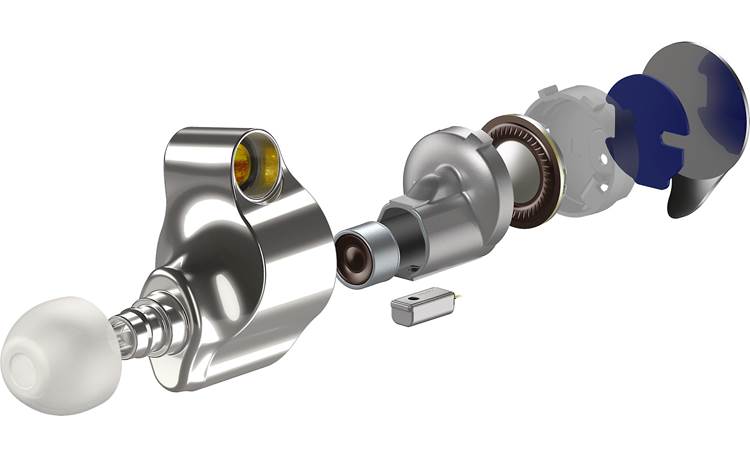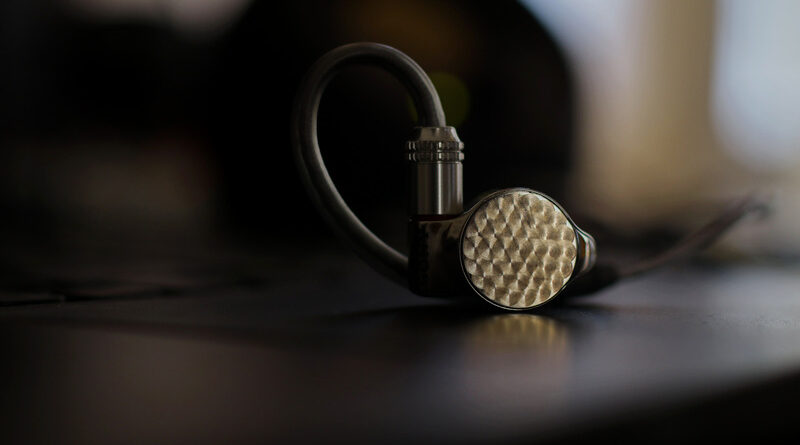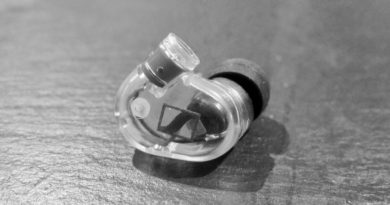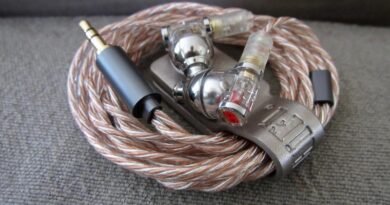Sony IER-Z1R Review – Sheer Bass-Head Delight
Pros — Build and accessory pack
– Great stock cable
– Bass slam, texture, rumble – the sheer physicality of it
– Sparkly-yet-smooth treble
– Engulfing soundstage
Cons — Recessed mmcx port on Sony IER-Z1R housing can be an issue for 3rd party cables
– Bulky housing gets uncomfortable and might not even fit
– Can deliver over-bearing bass at times
– Mids are lacklustre, average in terms of resolution and engagement factor
– Center-imaging isn’t class-leading
– Somewhat source-picky
In this Article
INTRODUCTION
Sony needs no introduction.
I mean, you have used at least one of their products in your lifetime. Thus, let’s cut to the chase. The Sony IER-Z1R is their flagship (universal) in-ear monitor. Priced at $1700 retail, these are true top-of-the-line contenders in the IEM space and is looking for a place among the best of the best earphones around.
Does the Sony IER-Z1R justify the hefty price-tag, or is it another underachiever? Let’s find out.
Note: the ratings given will be subjective to the price tier. My dear friend Syed lent me his personal unit.
Sources used: Cowon Plenue R2, Sony NW-A55, Sony WM1A, A&K Kann Alpha
Price, while reviewed: $1700. Can be bought from Sony’s Official Website
PHYSICAL THINGS AND USABILITY
PACKAGING AND ACCESSORIES
An accessory set fit for a king, preceded by a regal unboxing experience. The IER-Z1R puts most flagship packaging to royal shame *cough* 64Audio *cough*. It’s a TOTL product through and through and Sony spent considerable time into the packaging and accessories. The jewelry box like assembly with sliding trays keep the various items into their own compartment. The stock cables are built well and is very ergonomic with no touch noise, but they are a tad too long for my liking. Does help when you connect the IEMs to desktop amps though. There are too many tips to count and you get an oversized box to store the IEMs with felt-lining inside. Overkill, impractical, but very cool.
5/5
BUILD QUALITY
The Sony IER-Z1R is built and sized like a tank. The zirconium alloy shells are absurdly large. Everything but the nozzle is super-sized, including the recess into which the mmcx port sits. As a result one must choose after-market cables carefully. Most third-party cables have a thinner mmcx stem that will be literally eaten up by the Z1R (thus I’d recommend the Sony stock cable or the kimber cable).
Back to the housing, the backplate has a perlage pattern often seen on luxury watches (a metal tip rotates on top of the metal plate to form such a pattern). The shape of the housing mirrors the shape of the inner acoustic cavity (more on this later) and thus have a unique design rarely seen elsewhere. The top of the IEM houses the color-coded channel markings, where I can see something that resembles a vent. Other than that, no other vents or asymmetries in the housing.
The design stands out and draws attention, as is customary for Sony’s signature line of gear.
5/5
COMFORT, ISOLATION, AND FIT
Comfort = horrible. Fit = atrocious. Isolation = above average (when pushed deep into the canals, basically how these IEMs are supposed to be worn). Wearing the Sony IER-Z1R for any length of time is a challenge and will definitely be the deal-breaker for most people. Auditioning the IEM before purchasing is strongly advised.
1/5
SOURCE AND EARTIPS
The best source for the Sony IER-Z1R is Sony’s own WM1A Walkman DAP. People often talk about “synergy” between source and IEM, and very few pairings showcase such synergy. I myself tried the Z1R mostly with the Cowon Plenue R2 during review, however, and used the stock Sony Hybrid tips. Later on I tried it with the WM1A and that did improve upon my issues with the mids. If you are planning to get an IER-Z1R, the WM1A/WM1Z DAPs are recommended.
DRIVER SETUP
The Sony IER-Z1R has a triple-driver hybrid setup, with two dynamic drivers in charge of bass/mids and upper-treble, and one BA driver in charge of the treble.
The largest driver in this array is the 12mm bass/midrange driver that has a Magnesium dome with Aluminium-coated LCP surround. This ensures better pistonic motion and a very high excursion. The excursion is further aided by a resonance chamber and tube structure in the back of the driver. All of these results in the signature hard-hitting, dense bass of the Sony IER-Z1R.
The upper-treble tweeter also has a very interesting design. It’s a 5mm micro-dynamic driver with Al-coated LCP diaphragm and offers up to 100KHz response — a figure that’s inaudible by all humans but aces the numbers game. In practical use, the 5mm driver has very fast transients and offers the timbral accuracy of a dynamic driver instead of the artificial BA timbre or the fleeting, lightweight nature of EST tweeters.
Lost in all these is the miniscule side-firing BA treble driver that mostly handles lower and mid-treble. It’s a Sony proprietary T-shaped armature pin and has better timbre and slightly slower decay than typical Knowles BA drivers.
Sony doesn’t just stop here, rather they place these drivers in a coaxial orientation in a 3D-printed magnesium alloy chamber. The material choice is to reduce resonant frequencies and also the unique design results in a straight sound path for each driver, thus avoiding the usual cross-over tubes. Very fascinating driver setup all in all, but it’d all be for naught if the sound quality isn’t up to the mark. Fortunately, that’s not the case at all.


TONALITY AND TECHNICALITIES
The Sony IER-Z1R has a V-shaped sound signature, but that’s a reductionist statement to say the least. The IER-Z1R lives and breathes bass. The sub-bass sets the foundation of the entire sonic delivery and boy oh boy if this ain’t the best bass response in an earphone on this forsaken planet. I’ve heard IEMs with even more emphasized bass or faster bass, but the delightfully textured bass on the Z1R is second to none when it comes to providing the sense of rhythm. The slam, the slightly extended decay (unlike the super-fast BA bass), the subterranean reach of the sub-bass — it’s the whole package. The mid-bass is no slouch either (unlike the DF-tuned IEMs around) and snare hits/pedals have superb definition/body. Macrodynamics are some of the best I’ve ever heard. If you’re a bass-head, this is your endgame (as long as your ears are large enough).
The other aspect of the IER-Z1R that is apparent right away is the sense of space it portrays. The stage width is as good as many full-size open-backs. The stage depth is remarkable, and coupled with precise imaging you truly get that out-of-the-head experience. The one aspect where it falls short of the likes of, say, Hifiman Ananda in terms of staging is the stage height. This is where the large drivers on full-size headphones flex their muscles.
Despite the bass focus the treble on the IER-Z1R is… perfect. It has adequate sparkle and air without veering into the “bright” zone. Cymbal decays are well-extended and even in sections with super-fast cymbal hits the notes don’t smear into each other. Transient response overall is excellent. There is a slight peak around 5.5KHz but that never became a bother for me personally. This is where insertion depth comes into play because with a less-than-adequate insertion the treble becomes splashy. If I had to nitpick about the treble response it would be the slightly soft leading edge of notes. This rounded nature of upper-frequency notes help in avoiding listening fatigue but can take away the rawness of crash cymbals. Nonetheless, Sony has made a good trade-off IMO and the treble is nearly as good as it gets in the TOTL range.
Unfortunately, Sony focused a bit too much on the bass and treble and the midrange played second-fiddle to both. The mids here are just about okay I’d say. Male vocals sound somewhat muffled and female vocals, despite having more focus than male vocals, are robbed off of the emotion that certain IEMs in this price are capable of displaying. Also instrument separation and microdynamics weren’t as great as I hoped it would be, partly due to the recessed lower midrange. String instruments lacked the bite and their undertones were often muddied by the bass. Mid-range performance is definitely the weakest link in the IER-Z1R signature and that’s disappointing given the stellar bass and treble.
To summarize: if you like V-shaped sound signature and aren’t too bothered about the subtleties of vocals — this is it, this is the IEM to end all V-shaped IEMs.
Bass: 5/5
Midrange: 3.5/5
Treble: 5/5
Staging: 5/5
Imaging/Separation: 4.5/5
Dynamics/Speed: 4/5
SELECT COMPARISONS
vs Campfire Andromeda ($1000): The tuning of the Andromeda and the Z1R couldn’t be more different. Whereas Campfire Audio went for a relatively balanced tuning for the Andromeda 2020, Sony is proud of their bass driver and tuned the Z1R with sub-bass focus in mind. Bass is where these two IEMs differ the most. Andromeda 2020 has typical fast BA bass that’s nimble without being punchy. The Sony IER-Z1R’s bass is slower but makes up for that with slam and punch and sub-bass that rattles inside your eardrums.
Midrange is where the Sony pulls back a bit whereas the Andro 2020 (in contrast to the Andro 2019) gains some presence. Vocals are more prominent on the Andro 2020 and midrange in general is better executed, I’d say. String instruments esp shine on the Andromeda.
As for the treble, the Campfire Andromeda 2020 has really well-executed treble that’s smooth, non-fatiguing, and well-extended but pales in comparison to the treble on the IER-Z1R. Cymbal hits have a presence and crunch that’s just missing on the Andromeda 2020.
In terms of soundstage/imaging, the former goes to the IER-Z1R whereas the Andro 2020 has slightly better center-imaging than the IER-Z1R but similar cardinal/ordinal imaging otherwise.
If you want visceral bass punch and some of the best treble under $2000, the Sony IER-Z1R shall be your pick. However, the Andro 2020 has a more balanced tuning and acts as a complimentary tuning to the IER-Z1R’s exciting delivery. Comfort is also much better on the Campfire Andromeda, so there’s that.
vs Final A8000 ($2000): The Final A8000 is their current single-DD flagship and sports a pure Be diaphragm driver. While the A8000 has north-of-neutral sub-bass rise, it pales in comparison to the level of mid-bass thump that the Sony IER-Z1R provides. However, the A8000 bass is faster and will cater well to those who prefer a nimble bass presentation.
In terms of midrange, I prefer the A8000’s vocals by a margin over the IER-Z1R. Final knows how to tune the midrange and the vocals/string instruments are as articulate as they can be on the A8000. Every subtle nuance is highlighted including vocalists breathing in/out. Timbre is another strong point here with the metallic tinge of steel strings being evident against the more natural, softer tone of nylon strings.
The treble region is where the Sony IER-Z1R pulls ahead with no sharp 6KHz peak (A8000’s biggest downside) and more extended upper-treble. This leads to an even wider soundstage (though A8000 has very good stage width). Imaging is about even on both with center-imaging being slightly less accurate on both IEMs. Overall resolution is about similar on both, with the more resolving A8000 midrange being counter-balanced by the smoother yet better extended treble on the IER-Z1R.
Between these two, I’d pick the IER-Z1R if you can get a fit and don’t bother too much about midrange. However, the A8000 is a great choice if you prefer well-realized vocals/string instruments, a faster bass response, and don’t mind the 6KHz peak/willing to tune it via PEQ.
vs 64Audio U12t ($2000): Finally, Goliath vs Goliath. The 64Audio U12t is one of the best IEMs available around the $2000 mark and is one of the best all-BA IEMs out there. By swapping the APEX modules you can also increase the bass response in them (M20 offers a bit more bass). This comparison is made with the M20 module.
The U12t has perhaps the best BA bass out there, and it’s quite a feat indeed. However, it can’t out-muscle the physical grunt of the Sony IER-Z1R’s bass response. The mids are better tuned on the U12t, as is a theme in this comparison. The treble is where we find interesting differences. The U12t goes for a smoother treble presentation with rounded notes, whereas the IER-Z1R has a more immediate sense of attack that gives cymbal hits/hi-hats a really nice bite. I think depending on taste you might prefer one over the other, I myself find the Z1R’s treble response more appealing.
Soundstage is wider and taller on the IER-Z1R but stage depth is about par on the U12t. Imaging is tad more precise on the U12t, though these are marginal differences. Where I found more palpable was the difference in coherence. U12t, despite the 12 drivers, sounded more coherent than the IER-Z1R. Also a slight note about build/accessories: Sony IER-Z1R is quite a bit ahead on those aspects.
In conclusion, if you want a smoother, laid-back listen with great all-round performance, the 64Audio U12t will serve you really well. For those who need more excitement and fun-factor, the Sony IER-Z1R shall be on the top of your list.
CONCLUDING REMARKS
In hindsight, it’s quite easy to review and recommend the Sony IER-Z1R. If someone wants the best bass available in an IEM, they should definitely try the IER-Z1R. It’s an unabashedly fun, colored tuning that works well across various genres.
The big elephant in the room: the fit. Without a deep, snug fit you’d have a hard time finding what makes the IER-Z1R so special, making it rather necessary to trial these beforehand.
If you can get a fit, and if you love bass — the Sony IER-Z1R is a no-brainer really. I am yet to find something that tops it as the bass-head endgame, and if you know that’s what you want and got the right-sized ears — get ready for some brain-rattling.
Test tracks:
https://tidal.com/browse/playlist/04350ebe-1582-4785-9984-ff050d80d2b7
MY VERDICT
4.5/5
Highly Recommended if you want the ultimate bass-head IEM.
DISCLAIMER
The unit was on loan from a friend.
Our generic standard disclaimer.
SONY IER-Z1R PHOTOGRAPHY
You find an INDEX of our most relevant technical articles HERE.









